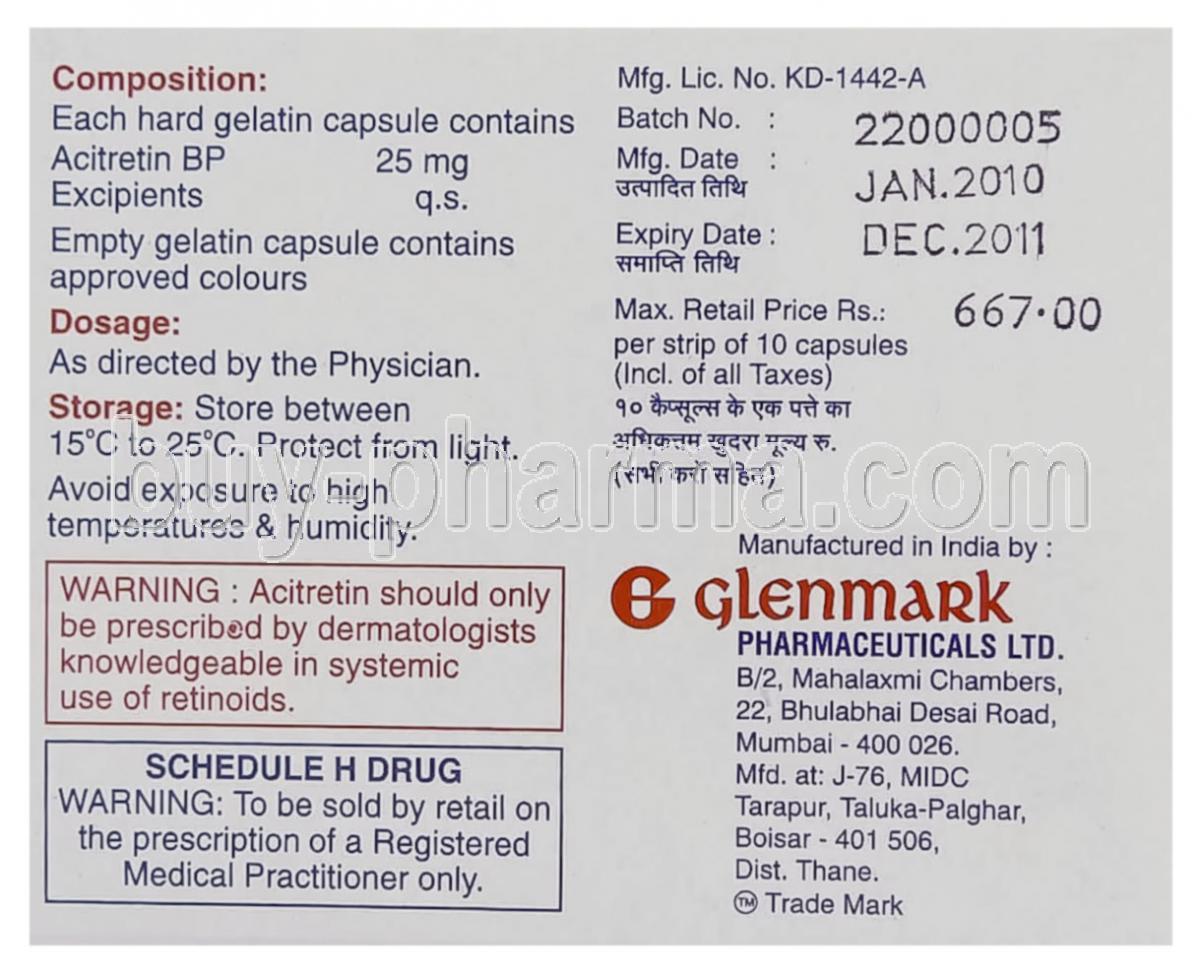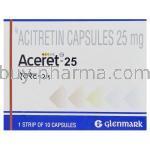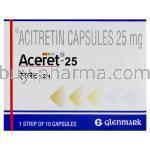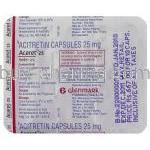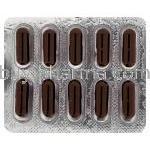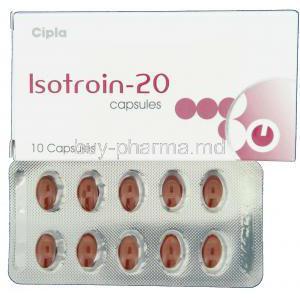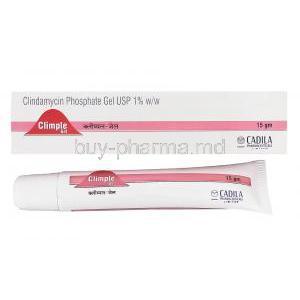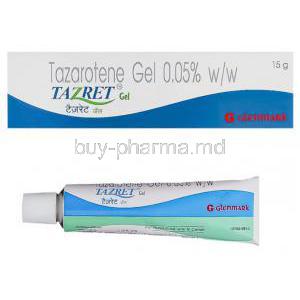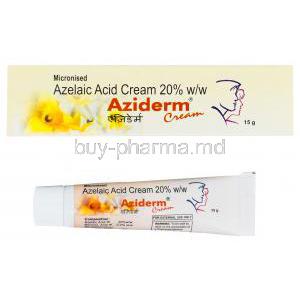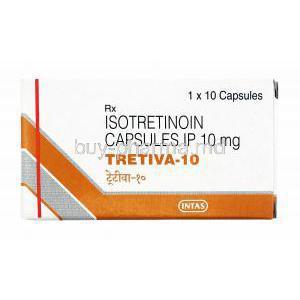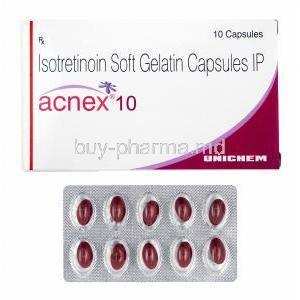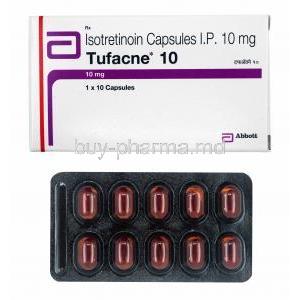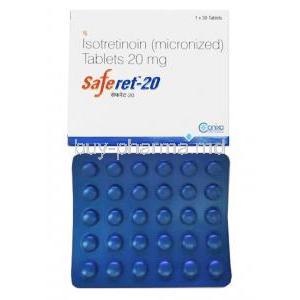Introduction to Aceret (Acitretin)
Overview of Aceret and its Therapeutic Class
Aceret is a systemic retinoid prescribed primarily for the treatment of severe skin disorders involving abnormal keratinization. As a second-generation synthetic retinoid, it plays a pivotal role in dermatologic therapy where topical treatments are insufficient or contraindicated.
History and FDA Approval Timeline
Acitretin was approved by the FDA in 1997 as a replacement for etretinate, which was withdrawn due to its prolonged half-life and teratogenic risks. Aceret has since become a cornerstone in the management of chronic plaque psoriasis and other intractable dermatoses.
Differentiation from Other Systemic Retinoids
Unlike isotretinoin and alitretinoin, acitretin demonstrates a more selective action on epidermal differentiation without targeting sebum production. It does not accumulate in adipose tissue like its predecessor etretinate, offering a shorter washout period and more predictable pharmacokinetics.
Branding, Manufacturer Information, and Availability
Aceret is marketed by Glenmark Pharmaceuticals and is widely available in multiple global markets. Generic acitretin is also distributed under various trade names, depending on the region and regulatory approval.
Active Ingredient and Pharmaceutical Composition
Acitretin as the Active Compound
Acitretin is a retinoic acid derivative, chemically designated as all-trans-9-(4-methoxy-2,3,6-trimethylphenyl)-3,7-dimethyl-2,4,6,8-nonatetraenoic acid. It acts on nuclear receptors to modulate gene expression involved in skin cell turnover.
Available Strengths and Dosage Forms
Aceret is available in capsule form in 10 mg and 25 mg strengths. These oral capsules are designed for systemic delivery to maintain consistent therapeutic levels in chronic conditions.
Inactive Ingredients and Formulation Details
The capsules typically contain excipients such as microcrystalline cellulose, sodium ascorbate, gelatin, titanium dioxide, and iron oxide for stability and bioavailability. The formulation is lactose-free and suitable for patients with common excipient sensitivities.
Generic vs. Brand Name Options
Generic versions of acitretin offer comparable efficacy at reduced cost. However, bioequivalence and manufacturing standards may vary slightly between brands, requiring physician oversight during brand substitution.
Mechanism of Action: How Acitretin Works in the Body
Retinoid-Mediated Modulation of Keratinocyte Differentiation
Acitretin binds to retinoic acid receptors (RARs) in skin cells, influencing transcription factors that regulate keratinocyte proliferation and differentiation. This leads to normalization of epidermal growth and desquamation.
Anti-Inflammatory and Anti-Proliferative Effects
By modulating inflammatory cytokines and suppressing epidermal hyperplasia, acitretin reduces scaling, erythema, and plaque thickness in psoriatic lesions.
Impact on Epidermal Growth and Gene Expression
The drug alters the expression of genes involved in epidermal differentiation, leading to re-epithelialization and resolution of hyperkeratotic lesions over time.
Long-Term Cellular Effects and Treatment Implications
Chronic use promotes sustained improvement in keratinization, although relapse can occur upon discontinuation. Continued monitoring is essential to assess cellular response and cumulative toxicity.
Indications and Approved Uses of Aceret
Severe Psoriasis
Aceret is approved for all severe forms of psoriasis, including:
- Plaque psoriasis resistant to topical agents
- Generalized pustular psoriasis
- Erythrodermic psoriasis involving extensive skin surface
Ichthyosis and Other Disorders of Keratinization
It is indicated for congenital and acquired ichthyoses such as lamellar ichthyosis, where it helps in normalizing skin scaling and improving barrier function.
Palmoplantar Keratoderma and Lichen Planus
In some regions, Aceret is approved for rare keratinization disorders like palmoplantar keratoderma and refractory lichen planus, where standard therapies have failed.
Off-Label and Investigational Uses of Acitretin
Cutaneous T-Cell Lymphoma (CTCL)
Acitretin has shown efficacy in early-stage CTCL by promoting differentiation and apoptosis of malignant T-cells.
Darier’s Disease and Hailey-Hailey Disease
These inherited dermatoses with impaired desmosomal function respond favorably to long-term acitretin therapy, reducing flare frequency and lesion severity.
Lupus Erythematosus and Systemic Sclerosis
Though not officially approved, acitretin has been used in cutaneous lupus and scleroderma patients to reduce hyperkeratosis and fibrotic changes, respectively.
Chemoprevention of Nonmelanoma Skin Cancer
In transplant recipients and immunocompromised individuals, low-dose acitretin reduces the incidence of squamous cell carcinoma through anti-proliferative effects.
Dosage and Administration Guidelines
Initial and Maintenance Dosing Strategies
Treatment usually begins at 25 to 30 mg/day, with adjustments based on patient weight and tolerability. Maintenance doses of 10 to 25 mg/day are common for long-term control.
Dose Adjustments Based on Body Weight and Response
Typical dosing is 0.5 to 1 mg/kg/day. Titration is guided by clinical response and adverse effect profile, especially in hepatic and renal impairment.
Recommendations for Treatment Duration and Tapering
Courses may last several months, with gradual tapering advised to prevent relapse. Intermittent therapy may be employed in some chronic conditions.
Administration with Food and Alcohol Considerations
Acitretin should be taken with meals to enhance absorption. Alcohol must be strictly avoided during and for at least 2 months post-treatment to prevent etretinate formation.
Common Side Effects of Aceret (Acitretin)
Mucocutaneous Dryness
Frequent adverse effects include:
- Cheilitis (lip inflammation)
- Dry eyes and conjunctival irritation
- Desquamation of facial and scalp skin
Hair Thinning and Brittle Nails
Reversible alopecia and nail fragility are common with prolonged therapy.
Joint Pain, Muscle Stiffness, and Fatigue
Arthralgia and myalgia may occur, particularly at higher doses or in older patients.
Laboratory Abnormalities
Acitretin can elevate:
- Serum triglycerides and cholesterol
- Hepatic transaminases (AST/ALT)
Routine monitoring is essential to mitigate long-term risks.
Serious and Rare Adverse Effects
Hepatotoxicity and Pancreatitis Risks
Rare cases of liver dysfunction and acute pancreatitis necessitate prompt discontinuation and specialist referral.
Skeletal Hyperostosis and Bone Changes
Chronic use may lead to ligament calcification, periostitis, or spinal hyperostosis, especially in elderly patients.
Psychiatric Symptoms
Mood swings, depression, and rarely, suicidal ideation have been reported. Psychiatric screening is advised for at-risk individuals.
Teratogenicity and Embryotoxicity Concerns
Acitretin is highly teratogenic. Effective contraception must be used during therapy and for at least 3 years after discontinuation due to potential for fetal malformation.
Drug Interactions and Contraindicated Substances
Interaction with Methotrexate, Tetracyclines, and Vitamin A Derivatives
Concurrent use with other hepatotoxic or retinoid compounds can increase toxicity risks and is contraindicated.
Effects of Alcohol Consumption on Etretinate Formation
Alcohol interacts with acitretin to form etretinate, a highly lipophilic and teratogenic compound with an extended half-life. Strict avoidance is mandated.
Impact on Hormonal Contraceptives
Acitretin may diminish the efficacy of microdosed progestin-only contraceptives. Combination hormonal methods are recommended.
Enzyme-Inducing or Inhibiting Drugs Affecting Acitretin Levels
Drugs such as phenytoin, carbamazepine, and ketoconazole can alter acitretin metabolism. Dose adjustments may be necessary under medical supervision.
Warnings and Important Precautions
Risk of Birth Defects and Pregnancy Prevention Programs
Acitretin carries a high risk of teratogenicity. Even minimal exposure during pregnancy can result in severe congenital abnormalities. For this reason, Aceret is strictly contraindicated in women who are pregnant or may become pregnant within three years of discontinuation. Patients must be enrolled in a pregnancy prevention program, involving:
- Monthly pregnancy testing
- Dual-method contraception, including one hormonal and one barrier method
- Comprehensive patient education on teratogenic risks
Liver Function and Lipid Profile Monitoring
Aceret may induce hepatocellular injury and dyslipidemia. Baseline and periodic monitoring of liver enzymes (AST, ALT) and lipid profiles (triglycerides, LDL, HDL) are mandatory. If transaminase or triglyceride levels significantly increase, dose reduction or discontinuation should be considered.
Avoidance of Blood Donation During and Post-Treatment
Patients must refrain from donating blood during treatment and for a minimum of 3 years afterward. This precaution prevents inadvertent exposure of pregnant recipients to acitretin, which could result in fetal harm.
Photosensitivity and UV Exposure Precautions
Acitretin increases the skin's sensitivity to ultraviolet radiation. Patients should avoid direct sun exposure, tanning beds, and use high-SPF broad-spectrum sunscreens. Protective clothing and sunglasses are also recommended during treatment.
Contraindications: When Not to Use Aceret
Pregnancy and Potential for Pregnancy
Aceret is absolutely contraindicated in pregnant women or those planning to conceive within three years. Its teratogenicity is well documented, and even a single dose can be harmful.
Severe Hepatic or Renal Impairment
Due to its hepatic metabolism and partial renal clearance, acitretin is contraindicated in patients with significant liver or kidney dysfunction. These conditions may amplify toxicity and complicate drug elimination.
Chronic Abnormally Elevated Blood Lipid Values
Patients with uncontrolled hyperlipidemia are not suitable candidates for Aceret therapy. The drug can exacerbate lipid abnormalities and elevate cardiovascular risk.
Hypersensitivity to Acitretin or Retinoids
Those with a known hypersensitivity to acitretin, retinoic acid derivatives, or any capsule excipients must avoid Aceret due to the risk of anaphylaxis or other allergic reactions.
Guidelines for Careful Administration
Patients with Diabetes, Obesity, or Cardiovascular Disease
Acitretin may worsen blood sugar levels and exacerbate pre-existing hyperlipidemia. Patients with metabolic syndrome or cardiovascular risk factors require close monitoring and potential dose adjustments.
Individuals with a History of Depression or Mental Illness
There is evidence suggesting that retinoids may affect mood. Patients with a psychiatric history should be carefully assessed before initiating therapy, with regular mental health check-ins during treatment.
Patients with Bone Disorders or Growth Concerns
Long-term use of acitretin has been associated with skeletal changes, including calcification of tendons and bone spurs. In patients with pre-existing bone conditions or those still undergoing growth (e.g., children), the benefit-risk balance should be stringently evaluated.
Concomitant Use with Phototherapy or Other Keratolytic Agents
When used with UV therapy or keratolytic agents, the risk of excessive irritation or phototoxicity increases. Dose reduction or treatment spacing may be necessary.
Use in Special Populations
13.1 Administration to Elderly Patients
Dosing Considerations and Renal/Hepatic Function Assessment
Elderly individuals often exhibit reduced hepatic and renal function. Initial doses should be conservative, with regular liver and renal function testing to avoid accumulation and toxicity.
Increased Risk of Hyperlipidemia and Bone Toxicity
This population may be more susceptible to retinoid-induced lipid elevation and skeletal complications. Routine lipid profiling and musculoskeletal evaluations are advised.
13.2 Use in Pregnant Women and Nursing Mothers
Strict Contraindication During Pregnancy
Aceret must not be used during pregnancy under any circumstances due to its strong teratogenic potential.
Use of Reliable Contraception and Pregnancy Testing Protocols
Women of reproductive potential must use at least two forms of contraception, beginning one month before therapy and continuing for at least three years after discontinuation. Monthly pregnancy testing is required.
Risk of Teratogenic Effects and Regulatory Warnings
National and international regulatory bodies, including the FDA and EMA, issue strong boxed warnings and recommend structured pregnancy prevention programs.
Avoidance During Breastfeeding Due to Unknown Excretion in Milk
Although data on acitretin excretion into breast milk is limited, the risk of neonatal toxicity warrants complete avoidance during lactation.
13.3 Use in Pediatric Patients
Limited Safety Data in Children
The safety and efficacy profile of Aceret in children is not well established. Pediatric use is generally reserved for life-altering keratinization disorders under specialist supervision.
Bone Growth Monitoring During Long-Term Use
Because of its impact on ossification and potential to cause premature epiphyseal closure, regular radiographic and clinical monitoring is recommended during prolonged treatment in children.
Specific Dosing and Clinical Trial Insights
When used, pediatric dosing is weight-based (e.g., 0.5 mg/kg/day), with strict adherence to monitoring protocols derived from limited pediatric studies.
Overdose and Emergency Management
Symptoms of Acute Overdose
Overdose of Aceret may result in:
- Severe headache
- Nausea and vomiting
- Dizziness and confusion
- Irritability or insomnia
Toxicological Profile and Potential Complications
Though rarely fatal, acute toxicity can strain hepatic function and exacerbate neurological symptoms. Chronic overdose poses skeletal and hepatic hazards.
Recommended Supportive Treatment and Hospital Observation
No specific antidote exists. Supportive care including rehydration, antiemetics, and symptomatic relief is advised. Liver function should be monitored, and ECG may be warranted if cardiovascular symptoms emerge.
Poison Control and Emergency Protocol Guidance
In cases of suspected overdose, patients or caregivers should contact a poison control center immediately. Emergency transport may be necessary if consciousness is altered or symptoms are severe.
Storage and Handling of Aceret
Recommended Storage Conditions
Aceret should be stored at controlled room temperature, typically between 15°C and 25°C (59°F–77°F). It must be kept away from excessive heat and freezing temperatures.
Protection from Light and Moisture
The capsules should remain in their original blister packaging to protect from humidity and direct sunlight, which can degrade the active compound.
Handling of Expired or Unused Medication
Expired Aceret must not be consumed. Patients should follow local pharmaceutical disposal protocols or return unused capsules to a pharmacy take-back program.
Disposal Instructions and Environmental Safety
Do not flush Aceret down the toilet or drain. Improper disposal may harm aquatic life or contaminate water sources. Use environmentally safe disposal services when available.
Safe Handling Precautions for Patients and Caregivers
Use of Gloves When Handling Capsules
Caregivers handling Aceret, especially for pediatric or elderly patients, should wear gloves to prevent accidental dermal absorption or contact with mucous membranes.
Avoidance of Contact with Broken Capsules
If a capsule is damaged or leaking, avoid direct contact. Contaminated surfaces should be cleaned with disposable cloths and disinfectant while wearing protective gloves.
Wash Hands After Handling
Even if gloves are used, caregivers and patients must wash hands thoroughly after handling the medication to reduce exposure risk.
Storage Out of Reach of Children and Pets
Due to the potential for toxicity, Aceret should always be stored in a secure, high location with a child-proof container or locking cabinet.
Aceret, Acitretin FAQ
- What is the medication Aceret used for?
- What is acitretin used to treat?
- What are the side effects of Aceret 25?
- What is the use of Aceret 25 mg?
- How long can I take acitretin?
- What are the positive effects of acitretin?
- What foods should you avoid while taking acitretin?
- Can acitretin cure psoriasis?
- Does hair grow back after acitretin?
- Is acitretin a high risk medication?
- How do I know if acitretin is working?
- Can I take vitamin D with acitretin?
- What are the most common side effects of acitretin?
- Does acitretin affect your mood?
- How long is a course of acitretin?
- What are the benefits of taking acitretin?
- Can acitretin cause hair loss?
- Can I take multivitamins with acitretin?
- Can I have a glass of wine while taking acitretin?
- Does acitretin cause weight loss?
- How safe is acitretin?
- Does acitretin make you tired?
- What is the black box warning for acitretin?
- Who cannot take acitretin?
What is the medication Aceret used for?
It contains Acitretin, which slows down the progression of Psoriasis. It reduces skin cell growth and clears affected skin.
What is acitretin used to treat?
It reduces skin cell growth and clears affected skin.
What are the side effects of Aceret 25?
- Dry lips
- Dryness
- skin peeling
- hair loss
What is the use of Aceret 25 mg?
It is used in the treatment of Psoriasis, Ichthyosis, and keratosis follicularis.
How long can I take acitretin?
Up to 3 months
What are the positive effects of acitretin?
Acitretin is a drug that slows down the overproduction of skin cells, which is a hallmark of conditions like psoriasis. This means it can actually reduce the size and thickness of those psoriasis lesions. making them less noticeable.
What foods should you avoid while taking acitretin?
Limit alcohol intake
Can acitretin cure psoriasis?
Yes
Does hair grow back after acitretin?
Yes
Is acitretin a high risk medication?
Taking this drug while you're pregnant can be really dangerous. It puts you at a risk for some serious and potentially life-threatening birth defects.
How do I know if acitretin is working?
You will notice skin improvement in as early as 2 weeks.
Can I take vitamin D with acitretin?
Yes
What are the most common side effects of acitretin?
- Dry lips
- Dryness
- skin peeling
- hair loss
Does acitretin affect your mood?
High doses can cause mood changes, irritability and aggression.
How long is a course of acitretin?
22 months
What are the benefits of taking acitretin?
It is used in the treatment of severe skin disorders, such as psoriasis.
Can acitretin cause hair loss?
Yes
Can I take multivitamins with acitretin?
Do not take vitamin A supplements.
Can I have a glass of wine while taking acitretin?
No
Does acitretin cause weight loss?
Yes
How safe is acitretin?
Acitretin can be tough on your liver. It may also boost triglyceride levels in your blood. If you're diabetic, it could mess with your blood sugar levels too.
Does acitretin make you tired?
Yes
What is the black box warning for acitretin?
It must not be used for pregnant women or women trying to get pregnant.
Who cannot take acitretin?
It must not be used for pregnant women or women trying to get pregnant.

